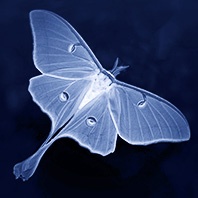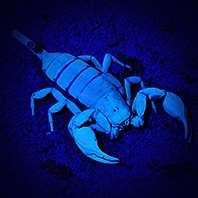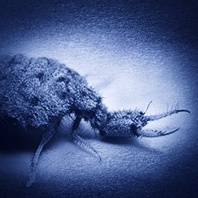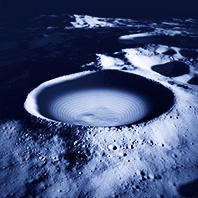Tag:
Biology
The word »mooncalf« is connected to a sad story, because in earlier centuries it was used for calves that were born malformed. It was assumed that the Moon was responsible for this, which was generally seen as a symbol of the feminine and dark side of life. Not exactly fair toward the Moon and unfortunately characteristic for the attitude wanting to assign the good to the masculine and the evil to the feminine.
Read more
The moths »Actias luna« and »Actias selene« in the family of Saturniidae, carry the Moon in their name – maybe because they are attracted to light and we connect them with the night; although, they can also be active during the day. But perhaps it is because of the crescent shaped wings or the pattern on top of the wings, which remind us of eyes that may have contributed to the naming. Luna is the moon goddess in Roman mythology, Selene is the equivalent in Greek mythology.
Read more
Scorpions have the quality that they are fluorescent and glow when in contact with UV radiation. This becomes clearly visible, when they are directly exposed to UV light. However, the UV components, which are contained in the sunlight and the moonlight, are hardly sufficient to produce this glow to an extent that it is visible to humans. Still, scorpions appear to detect the UV components and hence react to moonlight.
Read more
The antlion is the larva of the myrmeleon, which belongs to the net-winged insects. This insect grows to be 0.6 inches and predominantly stands out because of its large jaw pincers, which let you anticipate its predatory disposition. The antlion is famous for its sophisticated method catching prey. It digs funnels in the sand that function like a trap for other insects (i.e., ants or spiders). When prey steps on the edge of the funnel, the antlion begins to throw sand on the animal from the bottom of the funnel. The thereby created movements, activate the slipping of the funnel walls and transport the prey directly into the fangs of the antlion, who then kills them with its poison.
Read more
Even though the idea would be wonderful: this is not about trees that grow on the Moon, but about trees on Earth that grew from seeds, which orbited the Moon exactly 34 times, in a small canister, during the Apollo 14 mission in 1971. For this joint project by NASA and USFS (US Forest Service), the astronaut Stuart Rosa took hundreds of tree seeds with him on this journey. Seeds of five different species of tree had been chosen: loblolly pine, sycamore, sweetgum, redwood and douglas fir. The seeds survived the weightlessness and also when the canister that contained the seeds, got destroyed in the vacuum of the decontamination chamber. The seeds had to be picked up individually after this incident.
Read more
Our article “Fishing during a full moon” has already indicated the discussion about whether moonlight might influence the behavior of fish. Now we have found a study, which was conducted by Australian scientists in 2013, who have examined the diving behavior of 39 gray reef sharks in Palau (an island country in the Pacific Ocean), namely with regards to environmental influences, like water temperature and also lunar happenings, in particular the full moon and the new moon. They tagged the sharks with transmitters and thus were able to measure where and how deep they dived during certain times.
Read more
The exploration of foreign celestial bodies is particularly interesting for science, when there is the possibility of life could exist. An important condition for this provides the evidence of water (mostly in frozen form, because it contains oxygen). One may simply say that where water exists, life could develop, or is already present.
Read more
Jellyfish are fascinating beings and although, nobody would actually like to come into contact with them, we are mesmerized by them and admire their shapes, colors and almost etheric bodies, which are floating through the water – like entities from another world. And lo behold, there is also one kind that the Moon lent his name to: the »moon jellyfish« (lat. aurelia aurita).
Also in various other languages, you can find the word »moon« in the name these jellyfish:
Read more
The »sunfish« is called »moonfish« in many languages. It is the biggest and heaviest bony fish in the world, weighing up to 2,500 kg and showing off up to 3 m length and 4 m height! It can grow over 100 years old. Its Latin name »mola mola« derives from its shape, which reminds of a »millstone«, but apparently, also the Moon was the force behind the naming:
Read more
Have you ever wondered, after you took a photograph of the full moon that the Moon looks much smaller on the picture than as it appears to you in real? This effect occurs particularly when the Moon is above the horizon. This is a so-called Moon illusion, which is an optical illusion, meaning it can only be seen this way through our perception and is therefore not depicted on the photograph.
Read more










